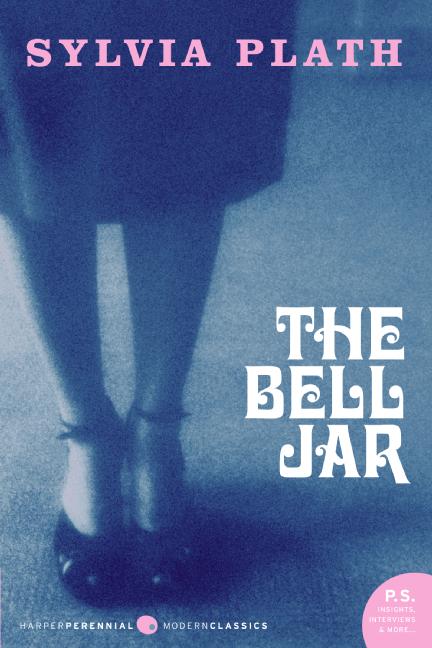
Sylvia Plath and The Four-Sided Bell Jar

I first heard of Sylvia Plath’s only novel, The Bell Jar, nearly 20 years before I read it. In graduate school, I was assigned The Silent Woman (1994), a biography by journalist Janet Malcolm on the shaping of Plath’s posthumous reputation by the living. Of the twelve students in that class, nine had read Ariel, Plath’s second and final volume of poetry. I was the only one who had not read The Bell Jar in high school or any other time.
What I had known about Sylvia Plath until that point could have fit under a bell jar and left room for a dozen bells: I knew she had committed suicide at age 30 by sticking her head in an oven, and had made sure her kids sleeping upstairs would not be harmed by the act. I knew at the time she was separated from another poet, Ted Hughes, and that feminist intellectuals and scholars often took up Plath and her work as a cause. And I knew the phrase “in the Bell Jar” had entered everyday dialect to mean “in a fog of sadness, often of one’s one making.” Look for it at about minute forty of the iconic 1990s bildungsroman Reality Bites.
I expected then to read the The Bell Jar and find a lightly fictionalized retelling of the author’s own destruction. The Bell Jar, based very much on Plath’s own twenties, was published a month after her suicide, first in England under the pen name Victoria Lucas. It was not released under Plath’s name until 1967 (after Ariel had brought her renewed attention two years earlier) and not in America until 1971. Even though The Bell Jar was written several years after the events described (including Plath’s 1953 suicide attempt while in college), I knew enough about the author than to think the story of her stand-in, Esther Greenwood, would be one of redemption and healing. That would be separating the world of Plath’s art from her own life. That can’t be done. Plath’s own life and her writing have been married with a welding torch. “Sylvia Plath belongs to that curious band of poets—it includes Chatterton, Keats, Rimbaud—whose fame is inextricably bound up with their lives,” wrote Al Alvarez, a fellow poet and friend of Plath’s. Many of those poets, Alvarez argues, also died young and dramatically, but few incorporated death of this kind into their work. Ernest Hemingway, Hart Crane, and Virginia Woolf were, along with Plath, three of 20th-century literature’s terrible losses to suicide. None of them wrote about the act in any meaningful way like The Bell Jar does.
But The Bell Jar is no 200-page letter of “goodbye, cruel world.” It is a fierce and furious story of struggling to live, not making peace with how to die. The author of this book has no trouble getting out of bed in the morning, even if her narrator cannot. This is as much the story of Plath’s ambition as her illness. Her prose is first like a hot needle—jabbing, insistent, and alive—then blunted and exhausted by its own fury.
That fury I didn’t expect. It felt like getting slapped by a stranger.
Esther Greenwood, like Plath, was a young woman with a successful magazine internship who slowly loses her mind. The first half of the novel is the internship. Esther is ambitious, talented, and arrogant. She hates New York, tolerates the other girls in her program, and believes working for the magazine (along with its uncomfortable outfits and dreary parties) is an annoying rest stop on the way to a meaningful literary career. Here Plath writes Esther with fast, chilly confidence. Each line feels as though Esther is ordering a waiter back to the kitchen.
At exactly the novel’s halfway point, Esther completes her internship, returns home, and begins to unravel. She cannot sleep, cannot read, and wants help from no one. Doctor’s appointments, therapy, electro-shock treatments, hospitalizations, and several suicide attempts follow. Here Plath’s sentences feel like slush under slow tires—tired, short paragraphs that can barely hold their heads up. The novel ends with Esther entering the room of her doctors, for an interview to determine if she is ready to leave the hospital. Without sympathy, for Esther or for us, Plath ends the story without telling us what happens.
Esther Greenwood is not easy to like. Plath has made the character cold, self-righteous, and dismissive of just about everyone who shows her kindness. She throws away flowers her mother sends her while at the asylum and blows off the only peer in the asylum who shows her friendship. Esther begins the The Bell Jar as a brat and concludes it as an older brat who has gone through hell but not changed much. I don’t wish pain and suffering on anyone. But Esther Greenwood does not earn much sympathy. And there is a ferocity to Plath’s choice of writing her that way that can feel almost mean.
One can find a feminist parable or an important work about mental health in The Bell Jar if you’re looking for it. But what I found is not just a portrait of patriarchy or of sickness, but of conflict—of a culture with unfair expectations for a young woman, yes, but also Esther Greenwood making an impossible attempt to both live within them and reject them. That her mind is making it hard to do much of anything is just salt in the wound. Both Esther Greenwood and Sylvia Plath wanted to live richly, wisely, and well. That choice—confused, arrogant, or misplaced—is a noble one. The imprisonment Plath lays bare in The Bell Jar was not simply that women in mid-twentieth-century America were under the boot of patriarchy. Plath’sbell jar actually had four sides—her ambitions, society’s expectations, the adversary of her illness, and her nonacceptance of the first three.
In an appreciation of The Bell Jar‘s 40th anniversary, writer Emily Gould wrote, “Like many American girls, I first read The Bell Jar when I was around 14. The parts I found most striking then were about Esther losing her virginity and related archetypes of passage” (our narrator loses her virginity, is fitted for a diaphragm, and holds her friend’s hair as she throws up).
Earlier this winter I was at a party and someone in the circle of conversation sitting next to me mentioned The Bell Jar. “The Bell Jar is for teenage girls what On The Road is for teen aged boys,” she summarized. I thought about the comparison. Published six years before The Bell Jar, On the Road is a book about youth, about liberation, about America opening like the great gates of Oz, welcoming you to find your true self. It was Jack Kerouac’s breakthrough novel. He died at age 47, a slow suicide of alcoholism and self-hatred. But he had a good decade or so of fame and a few more great books in him before then.
What we have of Sylvia Plath is mostly reverberation: The Bell Jar, two collections of poetry, a volume of letters, and a raft of biographies and head scratching. New examinations of her mental state and Ted Hughes’s affairs (the man had trouble keeping his pants on) arrive annually. They do not interest me very much.
If you can, ignore the gossip and blame and what-if-ing. Take Plath’s one great novel, about battling worlds inner and outer that cannot be reconciled, a book that rages at its own predicament, and weigh those predicaments against your own. Can you imagine having both ambition and duty and also not getting it right all the time? Can you imagine falling short, knowing those in your life will still support you, and that you’ll be able to be better tomorrow?
If you can, take The Bell Jar as a great novel that could have been the beginning of a great life and breathe with relief at your own. I would not read The Bell Jar right before life’s next big chapter but rather in the middle of one, where the heights you want to reach are imaginable even alongside the mistakes you’ve made, where the voices in your head may disagree with circumstance but are, on most days, calm.
———
Kevin Smokler (@weegee) is the author of the essay collection Practical Classics: 50 Reasons to Reread 50 Books you Haven’t Touched Since High School, forthcoming from Prometheus in 2013.
